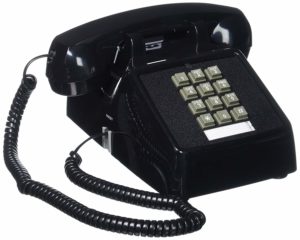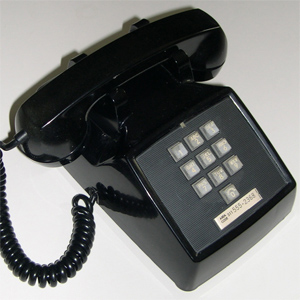Beyond nostalgia, the immediate recognition of a classic phone is very useful to set expectations. New kinds of interactivity are often very hard for people to figure out. Visual clues to signal the right verbs (or “frame the mechanics”) are invaluable.
For our recent library desk installation, we used a model that has 80 years of strong visual similarity, and is nearly identical to the 1974 version.
Ours was $45 from Walmart, purchase in 2018:

Touch-tone only arrived in 1963. Here is the 1964 version, which looks remarkably similar:

The star and pound keys were added in 1969 with the 2500 model. Ours is basically the same. Our version is the 2500-MD, meaning “modular” which means you can easily unplug the handset and base with modular plugs (this functionality arrived in 1974).
But we can go further back! The rotary version was offered in 1950:

The 1937 model looks pretty similar too:

Earlier models were slimmer, because they lacked a ringer for the desk. (The nearby “subscriber set” contained the ringer and the components to interface with the telephone network, according to Wikipedia.) The 101/102 units looked fairly similar:

Before 1926, phones looked quite different. They were “candlestick” phones (1890s-1940s) that had the transmitter and receiver in different handsets.
One thought on “Origin story: “Classic 1970s” Telephone”
Comments are closed.